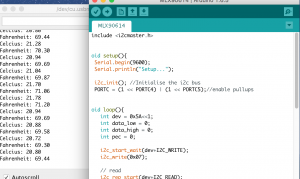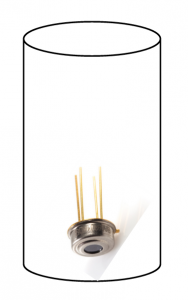I finally got the APK naming system worked out. Now, whenever we create an APK (both signed and unsigned) the apk will now be named as “FieldDay_username_#githash.apk.” Im now working on the design for our distribution system. The industry standard is to use a version system that will increment with every new APK production. Because we are a group all working on separate development builds that will later be compiled into one production build… there needs to be an easy way to automate the number system so that each production build will play nicely and we will be able to have them all installed independently without them installing over each other. I am also looking into a way to automate the upload system to our WordPress!
Maps & Other Stuff
I have been working on finding the maps we need. I found a site, http://shopicelandic.com/collections/maps/topographic which has some maps that could be really useful for us. Charlie also found the Land Survey website, http://www.lmi.is/, which would also be great to get them from, however it is in Icelandic and needs to be translated (google only translates part of the site). I started to gather a list of longitude, latitude coordinates for the places we want to make it easier to put it into this website. The next step with this is to get a more finite list of the places we will be going.
I read an article that supports Oli’s information on arctic foxes as well. Basically, yes red foxes are pushed arctic foxes further north limiting their range and competing for resources. In the long term global warming could bring more resources, but the red fox is pushing out of its habitat because of the warming temperatures. I still do not think we can do much about tracking this for next summer, but it is good to know that populations of arctic foxes are decreases and documenting that could be important information. This article is in the google drive folder for more information.
Finally, as for the bird survey, we really just need to decide if we want to try thermal imaging using a drone/balloon. And how we would do that. If not, we need to just look into other ways of surveying, which are available.
Weeks of 22 and 29 November, 2015
Lots of little things. One item that I would like to resolve sooner rather than later is list tracking, we have a number of on-going projects each of which have 1-3 people working on them and many little bits to track. I think we should also consider choosing a person per project to lead/organize the work for that project.
Over the break I worked on the Android <-> BlueTooth LE <-> Arduino interface. So far I have a working BLE example (with the LightBlue Bean) and I’m integrating that into an Android application that queries the temperature (which doesn’t come from the Arduino side of the chipset). Next is soldering-up header on a LBB so I can attach a sensor on Arduino side.
GIS, fund raising, logistics, and list management will comprise most of what I work on this coming week.
Things are working!
This week I was able to get the IR sensor wired up and working with a basic sketch. Right now it just reports the temperature in degrees C and F every second on the serial monitor. I tested it with different temperatures and it seems to work well.
Above left: the output from the IR sensor sketch. Above right: a basic layout for a possible casing for the sensor. I’m imagining it encased in a 3D printed tube with a cap. The tube would be the diameter of a soil corer. After a core sample is taken, the cap could be removed and the tube could be inserted into the soil to take a measurement. The IR sensor measures the temperature of a 90 degree view field.
I was also able to hook up the 5mw red laser with an on off switch over the break. I haven’t been able to test it out with a photo-resistor yet.
The PH and conductivity probes have so far been uncooperative with the UNO, but I am working on debugging the issue.
More Android!
I’ve done a decent amount of work on Android since the previous post. Charlie wanted a ‘Built-In Sensors’ button on to be under the ‘Take a Sample’ button on Field Day. Well, I’ve implemented that.
I’ve written some classes and code where it will query ALL of the available sensors that the device offers. Once it has a list of sensors, it will put them into a ListView and show them to the screen. Most sensors in Android supply 3 values — an x, y, and z. Field Day will query the sensors for values and also display those to the screen. There hasn’t been any work done to the values — they are just displayed as raw.
Implementing this involved created custom ListViews and ArrayAdapters so I was able to show the values and the names of the sensors on the same line. This class, like the other sensors, uses the same geo-coordinates and Satellites and Accuracy values as the other sensors — because it’s a Fragment as well.
I’ve also cleaned up the current code to use the Android suggested changes in Android Studio. Woo-hoo for clean and new code!
Week of 15 November 2015
Another week, another N things moved X distance:
- Met with K, G, E, D, and N to continue discussing Field Science/Wilderness Program bits. Notes can be found here.
- Ordered bits for the soil platforms, discussed protocols with T (software, sampling, bench).
- Assembled the next message for Oli, almost finished processing his most recent message.
- Oli sent a GIS file, I’ll unpack it and see if we can work with it.
- Considered our scheduled with K, we might want to leave a week or two earlier this year.
- Started poking at the Android <-> BlueTooth <-> Arduino interface.
This coming week:
- GIS bits.
- High-level tour of the most likely projects for this year: glacier measuring, soil platforms (field and bench), sustainable energy survey, avian nest survey, archeological site survey, ambiance platform, Field Day.
- Consider where we could teach what in the context of a field science Wilderness Program.
- Finish next email to Oli.
- Work with Deeksha on data model and current data sets.
- Develop initial materials for Institutional Advancement to use with potential donors; meet with
SallyS andAvisS. - Work with Eamon on the visualization interface.
- Work with Erin and Eamon on the wifi link for Skalanes.
- Work on Field Day <-> Bluetooth <-> Platform interface.
Settings
I brought over the settings from Seshat and put it into FieldDay and took the time to go through the code updating and changing it where it needed to be changed. MainScreenActivity was set up to use settings as a fragment, so I went ahead and made that change. I got the “version” to read out correctly, though in the app its set to version 1.0. The version schedule is still in the very early stages, so we can update it as need be. I realized how much of a learning curve android studio has, and I’m only now beginning to learn how to use it efficiently. I tested everything out and it works great! Fragments seem to use up less memory than a regular activity would. I’m having some issues with GIT right now but will push the changes as soon as I get that all sorted out.
Balloons, hot & cold
This week, I spoke to a “balloonist” whose hobby of hot air ballooning will hopefully inform us more on the idea of using hot air balloons, and the kinds of things we should be thinking about. Though it’s not the same thing (he balloons at a scale of hundreds of pounds) there’s tons to learn from his informative e-mail. This advice will be critical when we consider the design of our balloon. His email is pasted below.
”
What I took away from this at first: we need a rigid, lightweight structure to the balloon in order to prevent collapse in windy Iceland. We should really consider using pressurized gas burners, they make a lot of heat and we need a lot of heat. Lastly, we need some seriously heatproof materials, which are also leak-proof. I hope to identify what kinds of materials we will use this week, but it may be more prudent to figure out the design of our balloon first. The design may largely be determined by the following factors: weather (wind speeds at different altitudes, precipitation) and buoyancy needs (weight of balloon, tether, burner, camera/arduino etc).
A Search for Topographic Maps and Wilderness Meetings
I am currently in the process of ordering topographic maps of Iceland. Charlie helped me figure out the scale we need for the maps and now I am looking for a company that sell that scale for the places that we need. We also determined which places we need maps for, which includes Skalanes, Heimay, Grimsey and many other places.
On Wednesday at lunch I had a meeting with previous August Wilderness instructors and Zoe Wolfe (who is in charge of outdoor education right now). They had some great insights into the difficulties of creating a success program like this that is so interdisciplinary. I also asked them for the essentials of what makes an outdoor education trip/program/class what it is (see AW Meeting minutes in the Field Science-Wilderness folder of the drive). That afternoon the Wilderness/Field Science group met again to discuss more about the program (see minutes on that meeting). Right now we are just waiting to see if we get the grant that Charlie submitted a proposal for last week. We did more brainstorming on what we should include in the program and determined that measuring a glacier every year would be a crucial part of the program. Our next meeting is the Wednesday after Thanksgiving break.
Initial Sensor Testing
Right now I am working on wiring up each sensor individually and testing out Arduino sketches.
I have the IR temp nearly sensor wired up, just waiting on a capacitor set Charlie ordered this week. I have found found Arduino libraries that should give me everything I need to control the sensor over a serial connection. Charlie and I decided in the HIP meeting on Wednesday that I should hold off on integrating the sensors with a BLE shield until he has BLE set up on the Android/Field Day side. In the meantime I will figure out how the Arduino should package data onboard to send to Field Day.
I have started working with the pH and conductivity probes from AtlasScientific. I’m really excited about the quality of the documentation on the website and it has been easy to move forward so far.
The next steps are wiring up the laser in the laser mount and beginning building the optical density rig with Lego. I also want to look into the cheapest way to carry out the Munsell color test. I’ve found this simple visible light spectrometer that uses an Arduino board and has pretty detailed calibration options already built into the software. I’m looking more into that along with laser wiring this week. Yay spectroscopy!
Here’s a little demo film of the spectrometer. We wouldn’t use it for substance identification like he does, but for something much simpler – color detection!

